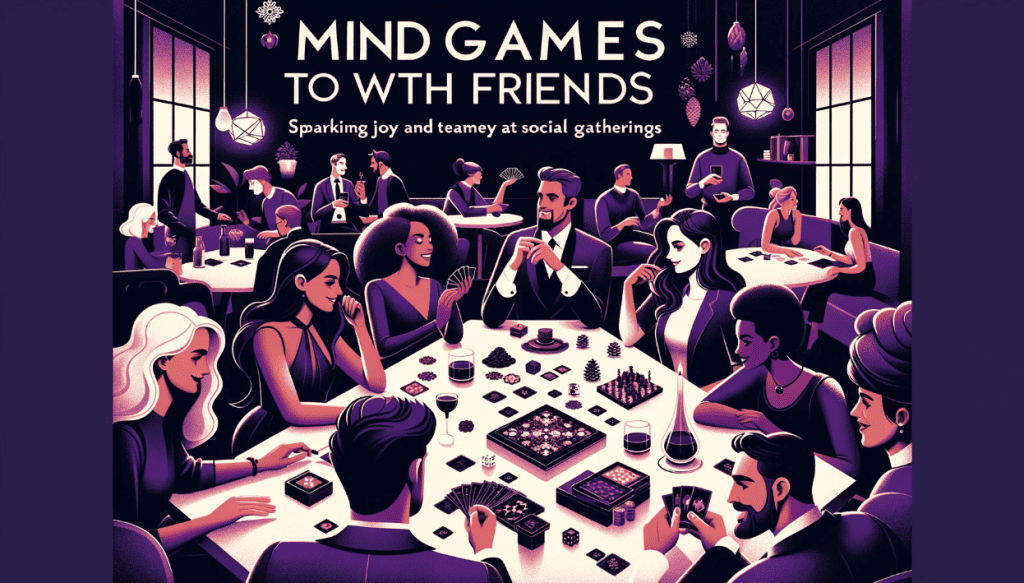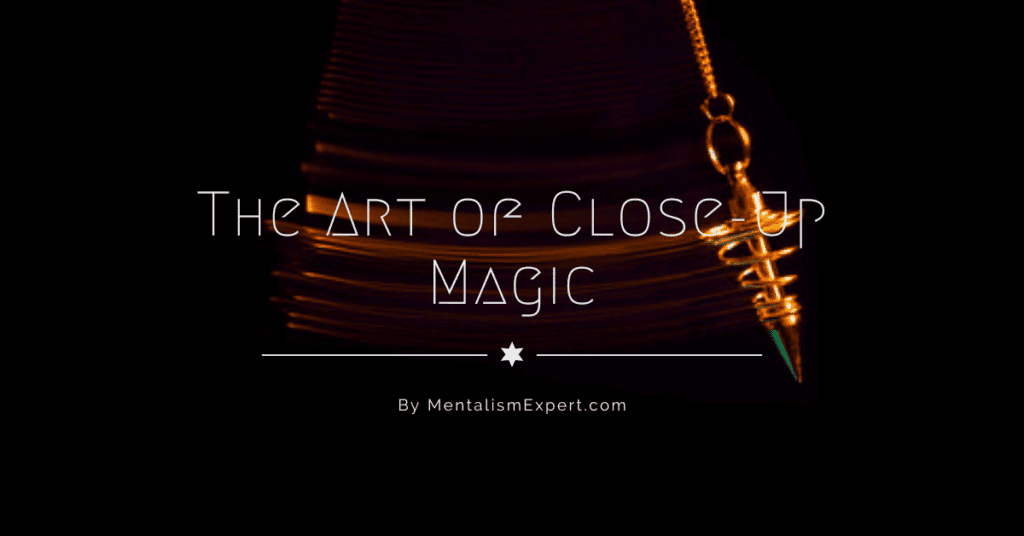Math card tricks are a type of mentalism that involve the use of mathematical principles and calculations to create the illusion of psychic ability. These tricks often involve the performer predicting the outcome of a card game or the value of a randomly selected card.
To perform a card trick using math, the mentalist may ask the audience member to shuffle a deck of cards and then choose a card at random. The mentalist can then use mathematical principles, such as probability and statistical analysis, to make seemingly accurate predictions about the value of the card or the outcome of a game. For example, the mentalist may ask the audience member to randomly select a group of cards and then use probability to predict which card will be chosen next.
Math card tricks are a popular form of mentalism that can be entertaining for audiences of all ages. While the tricks may appear to involve psychic ability, they are actually based on mathematical principles and can be learned by anyone with an understanding of basic math concepts.
Key Takeaways
- Mental math tricks can be a fun way to showcase your mathematical skills.
- These tricks often involve using basic arithmetic operations to manipulate numbers.
- You can use these cool mental math tricks to predict a person’s age, the position of a card in a deck, or the color of a card.
- Mental math tricks require some practice and quick thinking to perform effectively.
- With the right approach, anyone can become a mental math magician.
10 Most Easy Math Card Tricks
1. The mind reading math card trick
The mind reading math card trick is a classic magic trick that involves guessing the total value of a set of cards that a spectator selects. To perform this trick, you will need a deck of cards and a calculator (or a piece of paper and a pen to do the math). Here’s how to do it:
- Start by shuffling the deck of cards and have the spectator select any number of cards from the deck (it can be as few as one or as many as the entire deck).
- Have the spectator add up the value of their selected cards. For example, if they selected the 4 of hearts, the 8 of diamonds, and the Ace of spades, the total value would be 4 + 8 + 1 = 13.
- Ask the spectator to multiply that total by 9. In this case, the total would be 117 (13 x 9 = 117).
- Have the spectator take the last two digits of the result and subtract it from the original number. In this case, they would subtract 17 from 117, resulting in 100.
- Have the spectator turn over the top card of the deck. If the top card is the 10 of hearts, for example, have them add the value of that card to the number they just arrived at (in this case, 100 + 10 = 110).
- Finally, have the spectator tell you the final result (in this case, 110). You can then reveal that you have somehow magically determined the total value of the selected cards by correctly guessing the final result.
2. The 21-card trick
The 21 math card trick is a simple math-based card trick that involves guessing the total value of a set of cards that a spectator selects. To perform this trick, you will need a deck of cards and a calculator (or a piece of paper and a pen to do the math). Here’s how to do it:
- Start by shuffling the deck of cards and have the spectator select any number of cards from the deck (it can be as few as one or as many as the entire deck).
- Have the spectator add up the value of their selected cards. For example, if they selected the 4 of hearts, the 8 of diamonds, and the Ace of spades, the total value would be 4 + 8 + 1 = 13.
- Ask the spectator to multiply that total by 3. In this case, the total would be 39 (13 x 3 = 39).
- Have the spectator add 21 to the result. In this case, they would add 21 to 39, resulting in 60.
- Finally, have the spectator tell you the final result (in this case, 60). You can then reveal that you have somehow magically determined the total value of the selected cards by correctly guessing the final result.
Note that this trick relies on the fact that 3 x 7 = 21, so if the spectator’s total is a multiple of 7 (such as 14, 21, or 28), the final result will always be 21 more than the original total. This means that you will always be able to correctly guess the final result as long as you know that the spectator’s total is a multiple of 7.
3. The mental math magic prediction
The mental math magic prediction is a fun mental math trick that involves predicting a person’s age based on their birth month. To perform this trick, you can follow these steps:
- Ask the person to think of their birth month and not tell you.
- Tell the person to add the digits of their birth month together and keep adding the digits until they get a single digit. For example, if the person was born in November (11), they would add 1 + 1 to get 2.
- Ask the person to add the result to the age they will be next birthday.
- Finally, tell the person to subtract the result from 100.
- The final number that the person gets is the age that they are currently.
For example, if the person was born in November and will be 27 next birthday, they would add 2 + 27 to get 29. When they subtract 29 from 100, they will get 71, which is their current age.
4. The power of three math card trick
The power of three math card trick is a math-based card trick that involves using the powers of three to correctly predict which card a person is thinking of. To perform this trick, you can follow these steps:
- Have the person select a card from a deck of cards and remember it, but not show it to you.
- Ask the person to multiply the number on their card by 3.
- Have the person add the digits of the result together until they get a single digit. For example, if the result was 27, they would add 2 + 7 to get 9.
- Have the person add the single digit result to the number of letters in the name of their card’s suit. For example, if the card is the 8 of hearts, they would add 9 + 4 (the number of letters in the word “hearts”) to get 13.
- Finally, have the person subtract the result from the number 10.
- The final number that the person gets is the position of their card in the deck, with the Ace being 1, the two being 2, and so on.
For example, if the person chose the 8 of hearts, they would first multiply 8 by 3 to get 24. They would then add the digits of 24 together to get 6. They would then add the number of letters in the word “hearts,” which is 4, to get 10. When they subtract 10 from 10, they will get 0, which corresponds to the 10th card in the deck, the 10 of hearts.
5. “The final 3” math card trick
“The final 3” math card trick is a math-based card trick that involves using the number 3 to correctly predict which card a person is thinking of. To perform this trick, you can follow these steps:
- Have the person select a card from a deck of cards and remember it, but not show it to you.
- Ask the person to multiply the number on their card by 3.
- Have the person add the digits of the result together until they get a single digit. For example, if the result was 27, they would add 2 + 7 to get 9.
- Have the person add the single digit result to the number of letters in the name of their card’s suit. For example, if the card is the 8 of hearts, they would add 9 + 4 (the number of letters in the word “hearts”) to get 13.
- Finally, have the person subtract the result from the number 10.
- The final number that the person gets is the position of their card in the deck, with the Ace being 1, the two being 2, and so on.
For example, if the person chose the 8 of hearts, they would first multiply 8 by 3 to get 24. They would then add the digits of 24 together to get 6. They would then add the number of letters in the word “hearts,” which is 4, to get 10. When they subtract 10 from 10, they will get 0, which corresponds to the 10th card in the deck, the 10 of hearts.
6. The “Red and black” math card trick
The “Red and black” math card trick is a math-based card trick that involves using the colors of the cards to correctly predict which card a person is thinking of. To perform this trick, you can follow these steps:
- Have the person select a card from a deck of cards and remember it, but not show it to you.
- Ask the person to think of the color of their card (red or black).
- If the person is thinking of a red card, have them add the number on their card to the number 20. If the person is thinking of a black card, have them subtract the number on their card from the number 20.
- The final number that the person gets is the position of their card in the deck, with the Ace being 1, the two being 2, and so on.
For example, if the person chose the 8 of hearts (a red card), they would add 8 to 20 to get 28. If the person chose the 8 of spades (a black card), they would subtract 8 from 20 to get 12. In either case, the final number corresponds to the position of the 8 in the deck, which is the eighth card.
7. Trying the 11th card trick
The “Trying the 11th card” trick is a math-based card trick that involves using the number 11 to correctly predict which card a person is thinking of. To perform this trick, you can follow these steps:
- Have the person select a card from a deck of cards and remember it, but not show it to you.
- Ask the person to multiply the number on their card by 11.
- Have the person add the digits of the result together until they get a single digit. For example, if the result was 77, they would add 7 + 7 to get 14.
- Have the person add the single digit result to the number of letters in the name of their card’s suit. For example, if the card is the 8 of hearts, they would add 14 + 4 (the number of letters in the word “hearts”) to get 18.
- Finally, have the person subtract the result from the number 21.
- The final number that the person gets is the position of their card in the deck, with the Ace being 1, the two being 2, and so on.
For example, if the person chose the 8 of hearts, they would first multiply 8 by 11 to get 88. They would then add the digits of 88 together to get 16. They would then add the number of letters in the word “hearts,” which is 4, to get 20. When they subtract 20 from 21, they will get 1, which corresponds to the first card in the deck, the Ace of hearts.
8. The face up/ face down math card trick
The “face up/face down” math card trick is a math-based card trick that involves using the position of the card in the deck to correctly predict which card a person is thinking of. To perform this trick, you can follow these steps:
- Have the person select a card from a deck of cards and remember it, but not show it to you.
- Ask the person to think of the position of their card in the deck (Ace is 1, two is 2, and so on).
- Have the person add the number on their card to the position of their card in the deck.
- Have the person add the digits of the result together until they get a single digit. For example, if the result was 27, they would add 2 + 7 to get 9.
- Have the person add the single digit result to the number of letters in the name of their card’s suit. For example, if the card is the 8 of hearts, they would add 9 + 4 (the number of letters in the word “hearts”) to get 13.
- Finally, have the person subtract the result from the number 15.
- The final number that the person gets is either 1 or 0, depending on whether the card is facing up or facing down in the deck.
For example, if the person chose the 8 of hearts (the eighth card in the deck), they would first add 8 + 8 to get 16. They would then add the digits of 16 together to get 7. They would then add the number of letters in the word “hearts,” which is 4, to get 11. When they subtract 11 from 15, they will get 4, which corresponds to a face-up card. If the person had chosen a face-down card, they would have gotten 0 instead.
9. “Math-0-matics” card trick
“Math-0-matics” is a math-based card trick that involves using the numbers 0 and 11 to correctly predict which card a person is thinking of. To perform this trick, you can follow these steps:
- Have the person select a card from a deck of cards and remember it, but not show it to you.
- Ask the person to multiply the number on their card by 11.
- Have the person add the digits of the result together until they get a single digit. For example, if the result was 77, they would add 7 + 7 to get 14.
- Have the person add the single digit result to the number of letters in the name of their card’s suit. For example, if the card is the 8 of hearts, they would add 14 + 4 (the number of letters in the word “hearts”) to get 18.
- Finally, have the person subtract the result from the number 21.
- The final number that the person gets is either 0 or 11, depending on whether the card is a face card (Jack, Queen, or King) or a numbered card.
For example, if the person chose the 8 of hearts, they would first multiply 8 by 11 to get 88. They would then add the digits of 88 together to get 16. They would then add the number of letters in the word “hearts,” which is 4, to get 20. When they subtract 20 from 21, they will get 1, which corresponds to a numbered card. If the person had chosen a face card, they would have gotten 11 instead.
10. Make a deck bet math card trick
The “Make a deck bet” math card trick is a math-based card trick that involves using the numbers 1 through 13 to correctly predict which card a person is thinking of. To perform this trick, you can follow these steps:
- Have the person select a card from a deck of cards and remember it, but not show it to you.
- Ask the person to think of the position of their card in the deck (Ace is 1, two is 2, and so on).
- Have the person add the number on their card to the position of their card in the deck.
- Have the person add the digits of the result together until they get a single digit. For example, if the result was 27, they would add 2 + 7 to get 9.
- Have the person add the single digit result to the number of letters in the name of their card’s suit. For example, if the card is the 8 of hearts, they would add 9 + 4 (the number of letters in the word “hearts”) to get 13.
- Finally, have the person subtract the result from the number 14.
- The final number that the person gets is the position of their card in the deck, with the Ace being 1, the two being 2, and so on.
For example, if the person chose the 8 of hearts (the eighth card in the deck), they would first add 8 + 8 to get 16. They would then add the digits of 16 together to get 7. They would then add the number of letters in the word “hearts,” which is 4, to get 11. When they subtract 11 from 14, they will get 3, which corresponds to the third card in the deck, the three of hearts.
Conclusion
Mental math tricks, like the ones described above, can be a fun and entertaining way to showcase your mathematical skills. These tricks often involve using simple arithmetic operations, like addition, subtraction, and multiplication, to manipulate numbers and arrive at the desired result. Whether you are trying to predict a person’s age, the position of a card in a deck, or the color of a card, there are many different mental math tricks that you can use to impress and entertain your friends and family. With a little practice and some quick thinking, you, too, can become a mental math magician! Learn how to become a mentalist and even some easy magic tricks with Mentalism Exper!
FAQ
What is mental math?
Mental math is the ability to perform mathematical calculations in your head without the use of a calculator or other external tools.
How can I improve my mental math skills?
To improve your mental math skills, you can practice regularly by doing mental math exercises, such as solving math problems in your head or using mental math tricks to perform calculations. You can also try to visualize problems in your head and use mental shortcuts, such as breaking down large numbers into smaller parts or using place value to simplify calculations.
What are some common mental math tricks?
Some common mental math tricks include the mental math magic prediction, the power of three math card trick, the “Red and black” math card trick, and the “Math-0-matics” card trick.
Can anyone learn mental math tricks?
Yes, anyone can learn mental math tricks with some practice and the right approach. While some people may be naturally more skilled at mental math, anyone can improve their mental math skills with regular practice.
Are mental math tricks just for entertainment, or can they be useful in real-life situations?
While mental math tricks can be a fun and entertaining way to showcase your mathematical skills, they can also be useful in real-life situations where you may not have access to a calculator or other tools. Being able to perform calculations quickly and accurately in your head can be helpful in a variety of settings, including business, finance, and everyday life.








